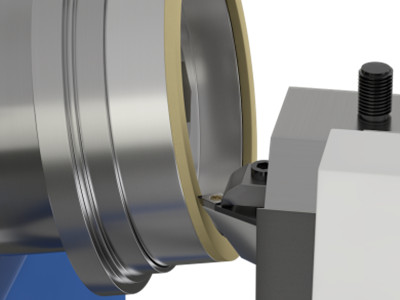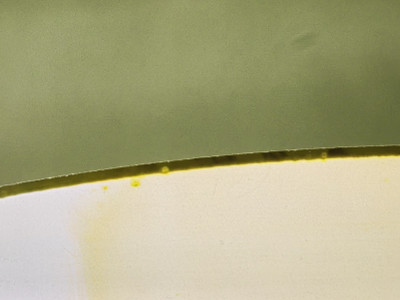
PCD tools have significant advantages when machining difficult-to-cut materials due to their excellent wear resistance and hardness. However, during the grinding process, craftsmen often encounter some problems.
1. PCD Tool chipping
Firstly, improper selection of grinding parameters is one of the main reasons. If the feed rate during grinding is too large, it is equivalent to applying excessive pressure to the tool edge, exceeding its bearing capacity, thus resulting in chipping. For example, when using high-speed steel tools for ordinary grinding, the feed rate is generally controlled at about 0.02 mm/rev. However, PCD tools have higher hardness and are more sensitive to the feed rate. If the parameters are still set according to those of high-speed steel tools, it is very likely to cause chipping of the tool edge.
Secondly, an inappropriate choice of grinding wheel can also cause problems. If the grit size of the grinding wheel is too coarse, the abrasive grains are larger, and the impact force on the tool edge during grinding is also greater, which can easily chip off the PCD material at the tool edge.
In addition, if the hardness of the grinding wheel does not match that of the PCD tool, a grinding wheel that is too hard or too soft will affect the grinding effect and lead to chipping of the tool edge.

2.High surface roughness
Sometimes, the surface of the ground tool feels rough to the touch. Such a tool will deteriorate the surface quality of the workpiece during processing and affect the product precision. This problem is largely due to the poor condition of the grinding wheel. After long-term use, the abrasive grains on the grinding wheel will wear out and become dull. When grinding the tool under such circumstances, it is impossible to make the tool surface smooth. In addition, unreasonable setting of grinding parameters can also result in high surface roughness. For example, an inappropriate rotational speed of the grinding wheel or too high a grinding speed will make the tool surface uneven.
3. Dimensional Deviation
The accuracy of the machine tool is a crucial factor affecting the geometry of the tool. If there is runout in the machine tool's spindle, during the grinding process, the relative position between the grinding wheel and the tool will change. This results in uneven grinding amounts on various parts of the tool, thus causing deviations in the tool's geometry. For example, when the spindle runout is 0.02 mm, a significant cylindricity error will occur when grinding the outer circular surface of the tool. In addition, inaccurate positioning accuracy of the fixture will also cause the tool to displace during the grinding process, thereby affecting the geometric shape accuracy.

4. Tool Burning
Tool burning is also one of the common problems. After a tool is burned, issues such as surface discoloration and hardness reduction will occur, seriously affecting the performance of the tool. This is mainly because the heat generated during the grinding process is too high, and this heat is not dissipated in a timely manner. For example, improper use of coolant or excessive grinding time can cause the tool temperature to rise too high, resulting in burning.

5.Excessive Grinding Wheel Wear
Rapid wear of the grinding wheel means that we have to replace it frequently. This not only increases costs but also affects work efficiency. On the one hand, it may be due to poor quality of the grinding wheel, which is inherently not durable. On the other hand, inappropriate grinding parameters, such as excessive grinding pressure or too hard workpiece materials, can cause the grinding wheel to wear out more quickly.
To solve this problem, it is necessary to select a grinding wheel of good quality. At the same time, adjust the grinding parameters according to the material of the workpiece and the grinding requirements to avoid excessive grinding pressure. There are a variety of problems that occur during the grinding process of PCD tools. We need to comprehensively consider and optimize various aspects such as grinding wheel selection, grinding parameter setting, machine tool accuracy, and cooling conditions. Only in this way can we improve the grinding quality of PCD tools, extend the service life of the tools, reduce processing costs, and enhance production efficiency.
PCD tools offer excellent hardness and wear resistance for machining difficult materials, but grinding them poses unique challenges. This article explores common issues such as chipping, high surface roughness, dimensional deviations, burning, and grinding wheel wear. Learn practical solutions to optimize grinding parameters, wheel selection, and machine accuracy to improve tool life and reduce costs.
Discover how our 3A1 ceramic diamond wheel helped a client achieve ultra-precise PCD reamer grinding. Learn how adjusting bond hardness and grit size resolved issues with carbide shank grinding for better edge quality and stability.
Add: Zhongyuan Rd, Zhongyuan District, Zhengzhou, 450001, Henan, China
Tel: +86 17700605088